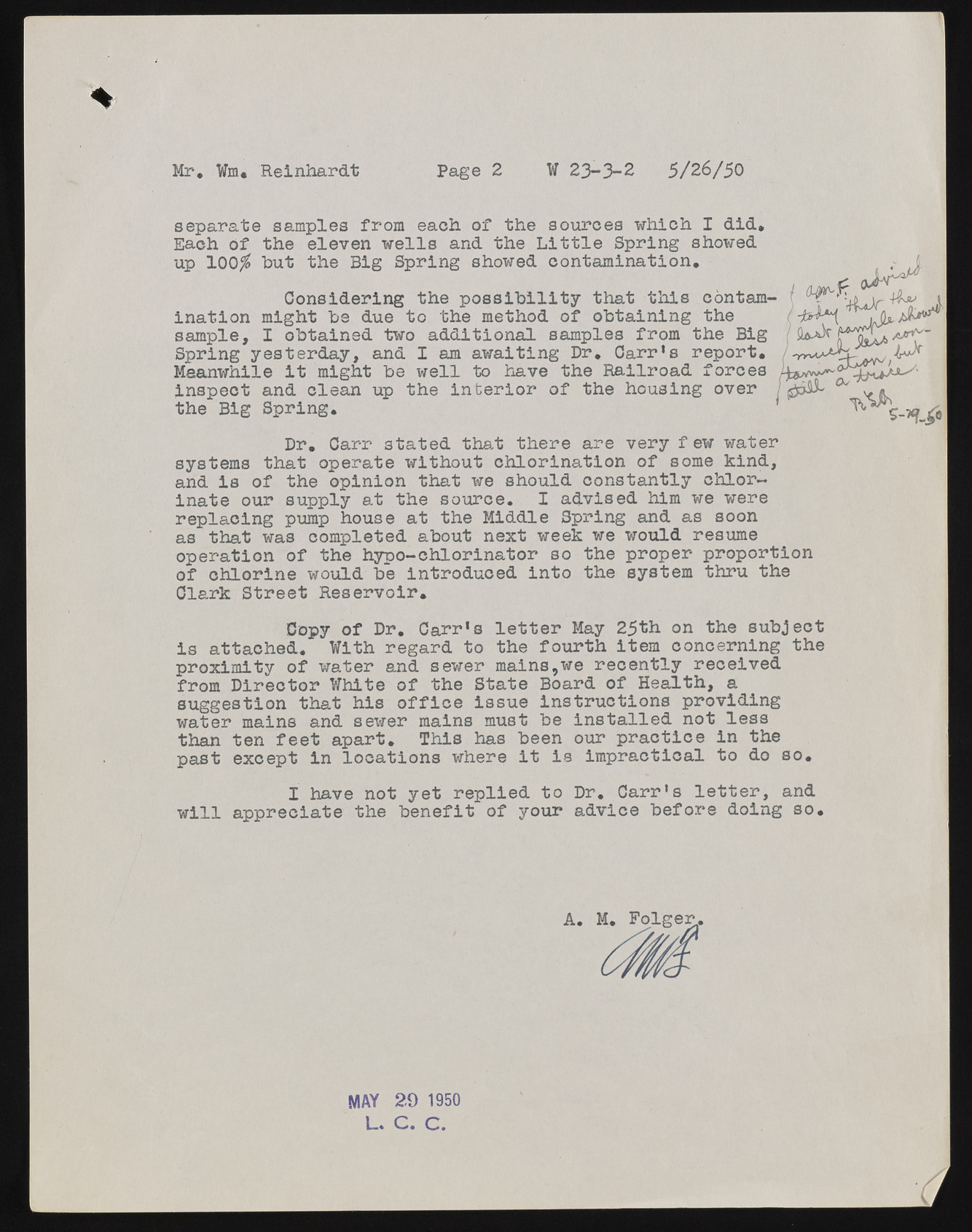Copyright & Fair-use Agreement
UNLV Special Collections provides copies of materials to facilitate private study, scholarship, or research. Material not in the public domain may be used according to fair use of copyrighted materials as defined by copyright law. Please cite us.
Please note that UNLV may not own the copyright to these materials and cannot provide permission to publish or distribute materials when UNLV is not the copyright holder. The user is solely responsible for determining the copyright status of materials and obtaining permission to use material from the copyright holder and for determining whether any permissions relating to any other rights are necessary for the intended use, and for obtaining all required permissions beyond that allowed by fair use.
Read more about our reproduction and use policy.
I agree.Information
Digital ID
Permalink
Details
More Info
Rights
Digital Provenance
Publisher
Transcription
Mr. Win. Reinhardt Page 2 W 23-3-2 5/26/50 separate samples from each of the sources which I did. Each of the eleven wells and the Little Spring showed up 100$ hut the Big Spring showed contamination. Considering the possibility that this contamination might he due to the method of obtaining the sample, I obtained two additional samples from the Big Spring yesterday, and I am awaiting Dr. Carr's report. Meanwhile it might be well to have the Railroad forces inspect and clean up the interior of the housing over j y. the Big Spring. ^ Dr. Carr stated that there are very f ew water systems that operate without chlorination of some kind, and is of the opinion that we should constantly chlorinate our supply at the source. I advised him we were replacing pump house at the Middle Spring and as soon as that was completed about next week we would resume operation of the hypo-chiorinator so the proper proportion of chlorine would b~e introduced into the system thru the Clark Street Reservoir. Dopy of Dr. Carr's letter May 25th on the subject is attached. With regard to the fourth item concerning the proximity of water and sewer mains,we recently received from Director White of the State Board of Health, a suggestion that his office issue instructions providing water mains and sexier mains must be installed not less than ten feet apart. This has been our practice in the past except in locations where it is impractical to do so. I have not yet replied to Dr. Carr's letter, and will appreciate the benefit of your advice before doing so. A. MAY 29 1950 L. C. C.

